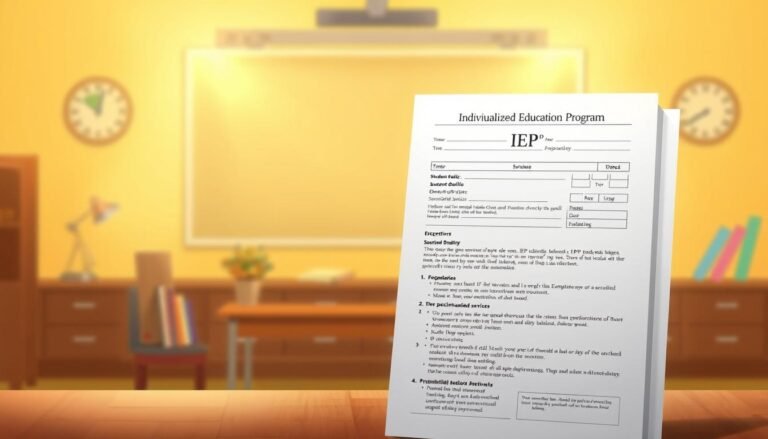
Building Bridges: Fostering Collaboration Between Home and School for IEP Success
Introduction
In today’s complex educational landscape, navigating the waters of special education can feel overwhelming for parents and educators alike. As families seek the best environments to cultivate their children’s strengths and address challenges, one principle remains pivotal: building bridges. Building bridges means fostering collaboration between home and school, a vital component for the success of Individualized Education Programs (IEPs). Research consistently demonstrates that when parents, guardians, and educators collaborate effectively, students benefit academically, socially, and emotionally. This article explores the importance of building bridges between home and school, emphasizes strategies for collaboration, and presents real-world case studies to illuminate the path to successful IEP implementation.
The Importance of Collaboration
Understanding IEPs
An IEP is a legal document designed to meet the unique educational needs of students with disabilities. It outlines specific goals, services, and accommodations tailored to support each child’s growth. However, an IEP is not merely a bureaucratic formality; it requires active engagement and collaboration among various stakeholders, including parents, educators, therapists, and the students themselves.
Why Collaboration Matters
Effective collaboration can significantly impact a child’s educational journey. According to the National Center for Learning Disabilities, students with involved parents are more likely to succeed in school. The following points illustrate why building bridges—fostering collaboration—between home and school is crucial for IEP success:
Enhanced Communication: Open lines of communication foster understanding and trust. Parents who feel heard are more likely to engage in their child’s education actively.
Shared Goals: When both parents and educators align on educational objectives, it creates a cohesive support system for the child, reinforcing learning strategies at home and school.
Holistic Support: Building bridges ensures that strategies discussed in IEP meetings translate into actionable steps both at home and in the classroom. This holistic approach reinforces learning.
- Emotional Well-Being: Strong relationships between families and schools positively affect the emotional well-being of students, providing them with stability and assurance that both environments are on the same team.
Strategies for Effective Collaboration
Developing a Partnership Mindset
One of the first steps in building bridges between home and school is to foster a partnership mindset. This approach cultivates a sense of shared responsibility and commitment to the child’s educational success.
Engagement Framework: Schools should implement frameworks that encourage parental involvement. For example, hosting workshops on IEP processes can empower parents with knowledge.
Regular Communication: Establish routine check-ins, newsletters, or digital communication tools (like Google Classroom or ClassDojo) to keep parents informed and involved in school activities.
- Celebrating Successes: Recognizing small milestones, whether it’s academic achievements or behavioral improvements, can promote a positive partnership atmosphere.
IEP Meetings: A Collaborative Approach
IEP meetings are a critical platform for collaboration. However, they can sometimes feel intimidating for parents. To make these meetings more effective, consider the following techniques:
Preparation: Before the meeting, parents and teachers should collaboratively set an agenda that addresses both parties’ concerns and goals for the student.
Inclusive Practices: Ensure that all relevant stakeholders (therapists, counselors) are invited to provide comprehensive insights into the child’s progress.
- Focus on the Child: Keep discussions centered on the child’s best interests. Use clear, jargon-free language to foster understanding and encourage input from all participants.
Building Trust Through Transparency
Trust is an essential element of collaboration. Schools can build trust with parents by demonstrating transparency in their policies, programs, and practices.
- Open Door Policies: Encourage parents to visit the school, observe classrooms, and engage with teachers, which can demystify the school environment.
- Feedback Loops: Create avenues for parents to provide feedback on school practices, ensuring their voices are valued.
Real-World Case Studies
Case Study 1: The Johnson Family
The Johnsons’ son, Ethan, faced communication challenges due to autism spectrum disorder. His parents initially felt disconnected from the school, often left in the dark about his progress. However, after attending an IEP meeting for the first time and expressing their concerns, they discovered a school that was eager to collaborate. They worked with Ethan’s teachers to set weekly goals and implemented at-home strategies that reinforced what he learned in the classroom.
Analysis
The Johnson family’s experience highlights the transformative power of open communication. By attending focused IEP meetings and expressing desires for collaboration, the family was able to create a more conducive learning environment for Ethan.
Case Study 2: Willow Creek Elementary School
Willow Creek Elementary implemented a “Family Engagement Team” aimed at strengthening communication between families and staff. They organized regular events where parents could interact with educators and discuss their children’s needs in an informal setting. These gatherings not only broke down barriers but fostered a sense of community.
Analysis
Willow Creek’s proactive approach exemplifies how schools can initiate a culture of collaboration. By creating opportunities for informal interaction, they instilled trust and ease amongst parents and educators, making the IEP process feel more accessible.
Data-Driven Insights: The Impact of Collaboration
Table 1: Parent-Teacher Collaboration Outcomes
| Measure of Success | Pre-Collaboration (%) | Post-Collaboration (%) |
|---|---|---|
| Student Engagement | 60 | 85 |
| Parent Satisfaction | 55 | 90 |
| Academic Progress | 65 | 80 |
| Behavioral Improvements | 40 | 75 |
This table demonstrates a marked increase in various success metrics as collaboration between parents and teachers improves. Clearly, building bridges fosters a more engaged and successful educational experience.
Overcoming Barriers to Collaboration
While the benefits of collaboration are evident, various barriers can hinder progress. Some common challenges include:
Time Constraints: Educators often face heavy caseloads, making it difficult to engage parents regularly. Solutions include scheduling meetings in advance or utilizing technology to facilitate communication.
Cultural Differences: Understanding cultural backgrounds can enhance communication. Schools should implement culturally responsive practices to appreciate diverse perspectives.
- Lack of Knowledge: Some parents may lack understanding of the IEP process. Schools must offer education and support to empower families to take an active role.
Conclusion
Building bridges: fostering collaboration between home and school for IEP success is not merely a best practice; it is an essential component of educational achievement for students with disabilities. By embracing collaboration, schools can empower families, enhance student outcomes, and create a supportive learning environment. As parents and educators unite in a shared vision for a child’s success, they pave the way for lasting relationships that transcend the classroom wall.
In summary, consider the following actionable insights:
- Engage Actively: Attend IEP meetings and approach them as opportunities for collaboration.
- Communicate Regularly: Leverage technology and open communication channels to maintain a connection.
- Celebrate Together: Acknowledge achievements, no matter how small, en route to IEP goals.
As we strive to build bridges for IEP success, remember that the journey involves us all—parents, educators, and students alike. Together, we can create a brighter future for every child.
FAQs
1. What is the primary purpose of an IEP?
An IEP is designed to meet the unique educational needs of students with disabilities, outlining specific goals and the services to achieve those goals.
2. How can parents effectively prepare for an IEP meeting?
Parents can prepare by reviewing the child’s current progress, drafting an agenda with specific concerns, and gathering relevant documentation (e.g., teacher reports, assessments).
3. What can teachers do to encourage parental involvement?
Teachers can offer regular updates through emails, create a welcoming classroom environment for parents, and host workshops to educate families about the education system.
4. How can schools address cultural differences in collaboration?
Schools should include staff trained in cultural responsiveness, engage families in conversations, and celebrate diverse cultural contributions to create an inclusive environment.
5. What are the consequences of poor collaboration between home and school?
Poor collaboration can lead to misunderstandings regarding a child’s needs, inconsistent implementation of IEP goals, and negative impacts on the child’s educational experience and emotional well-being.
By focusing on building bridges and fostering collaboration, we can ensure that every student receives the support they need to thrive. Whether you are a parent, an educator, or a community member, your role in this partnership is invaluable. Together, let’s pave the way for IEP success in a collaborative, inclusive manner!
















